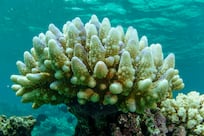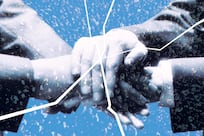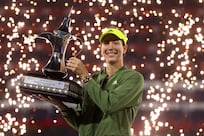It's 3am at London's Heathrow airport and over the electronic din of the transit terminal, I can hear a chicken salad sandwich calling my name. I like to think that travel doesn't throw me off balance so much as allow for a state of detached recalibration; a suspended vacuum where I'm not only free, but maybe even encouraged, to eschew routine in favour of impulsiveness. When crossing time zones, you gain some and you lose some, and who's counting? Not me. And, the truth is, there isn't a whole lot of regularity in my life for a crazy schedule to disrupt in the first place.
Given how oppressively square the traditional thrice daily meal structure can sound (especially if you're responsible for cooking it), it's amazing how many conceptual variations exist for "breakfast", "lunch", "dinner" and "supper". Though there's certainly nothing heroic, irreverent or defiant about eating whatever it is one feels like eating, cultural inclinations, and thus, implications, regarding what and when to eat or drink can get in the way of anyone who's interested in adapting to how another culture eats, or simply hoping to avoid looking like a yokel.
There's so much good, inexpensive takeaway available in the UAE that a packed lunch doesn't have to be a matter of cost prevention: for many people, it's a lot cheaper to order lunch into the office via delivery boy than it is to assemble a decent lunch bag using mostly imported ingredients from the supermarket.
A fairly common example might include parts of Europe where you may expect salads to be served after, rather than before, the main dish. In North America, it's the reverse. And in informal settings around the world, salads are often presented on the table alongside the main course.
In Italy, ordering a milk-based coffee drink, such as a cappuccino, after 11am, is scorned; it's too late in the day for the richness of milk. But in other parts of Europe, even after shadows grow long, friendships are solidified, business deals are made, and deadlines are postponed over mid-afternoon lattés.
Americans are snackers who eat on the run and don't take a lot of time to do so; they eat everywhere and constantly, with neither ceremony nor apology, and often with a degree of thoughtlessness and self-absorption so earnest that it's impossible to call it vulgar. In some ways, I actually find the utter lack of self-consciousness about eating in public enviable because I'm so painfully insecure about it. Japanese cars sold in Japan don't contain drink holders because Japanese people don't eat and drink in their cars, or in public at all, if they can help it.
In Japan, fish and rice are often eaten as part of breakfast, and in China, people eat rice porridge, or congee. My friend Jennifer, whose gluten intolerance prevents her from eating most hot breakfast cereals, makes a non-traditional savoury breakfast risotto, to which she adds lots of fresh pesto and mascarpone cheese. I'm not gluten-intolerant, but I actively dislike sweet cereals, both hot and cold, when I first wake up, and Jen's Italianate breakfast porridge made me realise that I wasn't alone in my conviction that breakfast can be whatever you want it to be, no apologies or explanations necessary.
Brunch is a late-morning or midday meal, usually held on weekends and marketed as a lavish hybrid of breakfast and lunch, even in its most rudimentary form. Though brunch is an institution in the US, it's still considered something of a novelty elsewhere. Brunch is tricky, though, and truthfully, I'd rather coast through my morning on an empty fuel tank than slop through a mess of pancakes with syrup, bloated muffins, leaden French toast, soggy scrambled eggs and greasy potatoes.
I like to fall asleep (and thus, wake up) with an empty stomach because I find it helps me sleep better. On the rare occasion that I do want something sweet, I have it on its own, in the mid-afternoon, the way I was raised to eat sweets. Thyroid function and digestive enzyme production slow down while we sleep, and a lighter stomach helps me sleep more deeply. Perhaps it's partly psychological: one dietary myth that's had it's 15 seconds and then some is that eating fruit after a meal will inhibit the absorption of the fruit's nutrients (not true), although some people do experience indigestion from eating fruit after a meal, because fruit breaks down in the gut at a faster rate than the proteins, carbs and fat that preceded it.
Many also believe that eating cheese before bed results in nightmares, though there's a possible explanation for this: cheese contains tyrosine, a non-essential amino acid with an indeterminate effect on mood regulation. I marvel at people who can manage dessert after dinner, since I've never been able to control my dinner intake to accommodate dessert.
Americans have a reputation for eating rather early in the evening, around 7pm, and "early bird" specials are cultural relics stereotypically linked to the elderly. Early bird dinners usually feature a limited, reduced-price menu, intended to attract diners who are both eating on a budget and accustomed to eating earlier in the evening, prior to their main dinner seating.
Somehow, I could never quite wrap my mind around the idea of a 5pm dinner. In many parts of the world, including Spain and the Gulf, dinner is a late-night affair, usually commencing around 10pm. Most restaurants in the US, fine-dining and otherwise, stop serving earlier than most tapas joints in Spain even unlock their doors. And it's the Arab and Spanish habit of having a long, heavy lunch that leads to their shared tradition of the afternoon siesta, otherwise known as downtime that includes a nap. Prior to the age of air conditioning, people needed a large meal to replenish their resources and a break from the elements before returning to outdoor work. Although we've mostly adjusted to a more traditional alternative, ie the eight-hour workday, Arabs and Spaniards are still night owls.










